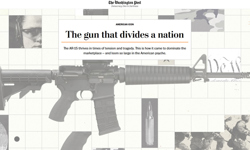Congratulations to INMA for identifying a vital industry issue that is largely ignored. Their recent workshop in London touched on two of the most important issues of our industry: How do we attract news consumers? How do we retain them, and expand their revenue potential? And what does this mean for print? Whether our self-professed industry visionaries like it or not, 80% of our revenues will still be in print in five years’ time.
I first tackled the issue of loyalty and frequency back in the early 80s. We were looking at both focussing on target groups, and identifying new revenue opportunities. In the UK, where I worked then, our vision was a long street, where we knew our “touchpoints” (circulation and advertising details) with every address, be it a home, a small business, or a major brand. We were able to create a profile for every address together with a strategy for maximising our potential from that address, be it circulation, advertising or alternative revenues. So, the current CRM added value concept is not new. What has changed is the analytical capability to manage and exploit the relationships that already existed, which is extraordinarily exciting for those publishers willing to invest what is a small cost, relative to an enormous potential.
I sense that much of the passion for CRM largely died in the avaricious 90s, and it is good to see that INMA is now revisiting what remains a key strategic component. I ask, why have we wasted 15 years? If only our other industry protagonists realised that print will drive our fortunes for many years to come, and that digital, while vitally important, will neither be our saviour, nor our nemesis.
Some facts
Today, less than 10% of newspaper revenues are derived from digital activities. According to forecasts I have produced, by 2017, digital will optimistically account for just less than 15% of newspaper revenues worldwide.
It is difficult to determine profitability from each revenue stream of the business, but my rough guestimate is that today, 4% of contribution after direct costs comes from digital, and that by 2017 this could rise to 12%. Of course there are exceptions. Schibsted claim that 50% of their profits are derived from digital. But questions have to be asked about cost allocation.
Next, newspapers are not so much losing readers as losing reader frequency and loyalty. In the UK for example, over the last five years, the number of people who ever read a newspaper has fallen by 3.7%, while average issue readership has fallen by 17.5%. Circulation has fallen by 24.2%, much of which is due to a deliberate and correct decision to remove free copies from the circulation audit process. This is a clear demonstration of why INMA are correct to focus on the issues of loyalty and frequency.
As I’ve noted before, digital news consumption patterns online are even more erratic. In the USA, the average newspaper web user spends around 4.4 minutes a day reading 5.7 pages, and they view around four sources, compared with 1.2 in print. While around 60% of web users in the USA visit a newspaper website, newspaper sites account for only 0.9% of pages viewed, and 1.6% of pages per visitor (with the average site achieving 3.6 pages per visit).
What is interesting is that, in most markets, the wealthiest media consumers are also the most likely to be infrequent and disloyal. While up-market media consumers are more likely to use a wider range of print or digital media, their usage tends to be less frequent and less intense. In print, for example in the UK, a largely single copy market, less than a third of readers read at least three out of four copies. Among the up-market “quality” newspapers, the figure is less than one in five. In the digital world, while up-market newspapers show a ratio of online monthly unique visitors to circulation that is six times that of the popular tabloids, their number of pages consumed is less than half. So our audience that is of most value to our advertisers is also our least loyal in terms of frequency or intensity.
The final point - and I make no apology for repeating myself - is that there is not a shred of evidence that the internet is harming print circulation. I base this on analyses of correlation tests in four countries. In addition, my most recent analysis, where I compared the growth of newspaper websites, with the trends in circulation across 17 countries, suggests that where newspapers’ online audiences have grown the most over the last three years, their circulations have performed the best (least badly). The analysis suggests that for every 10% that newspaper online audiences have grown over that period, circulation performance has been 1.4% better. I challenge anyone to demonstrate – factually, not anecdotally – that I am wrong.
In conclusion, rather than investing all our intellectual capital in the fashionable world of digital, our industry needs to refocus on some of our basic components. These start with the 80% of our revenues that will underpin our industry for the foreseeable future: print circulation and advertising, and then revisit the key drivers of our success across all our business activities, namely frequency, loyalty and intensity.










